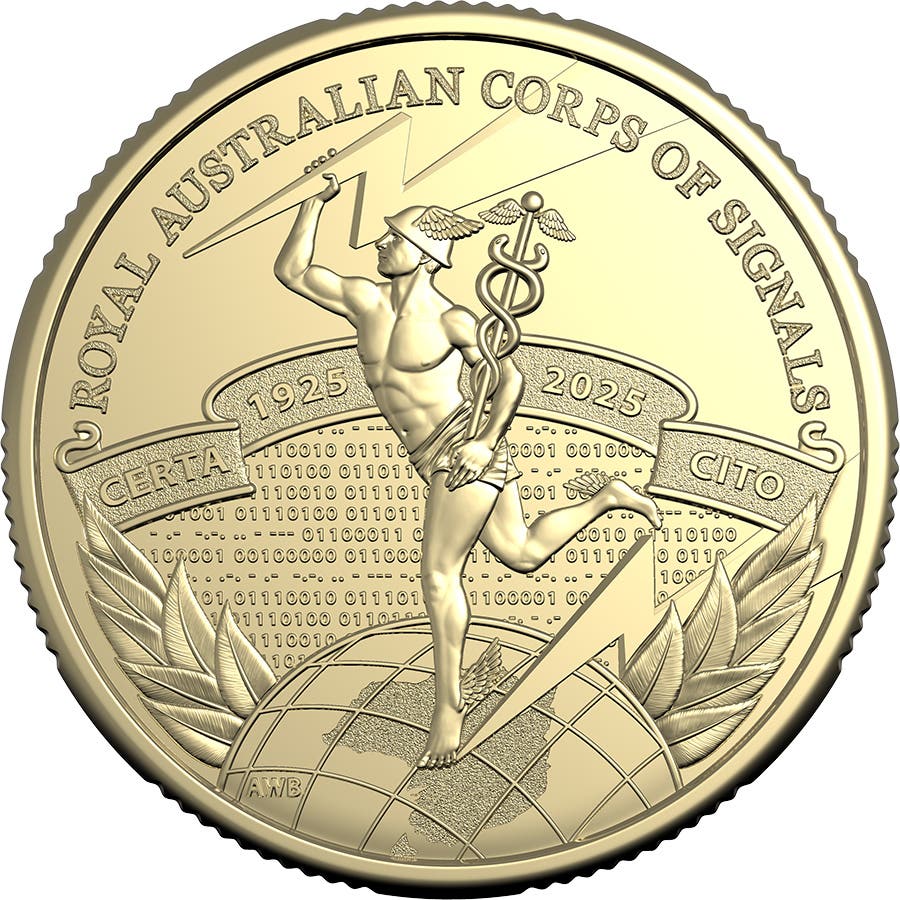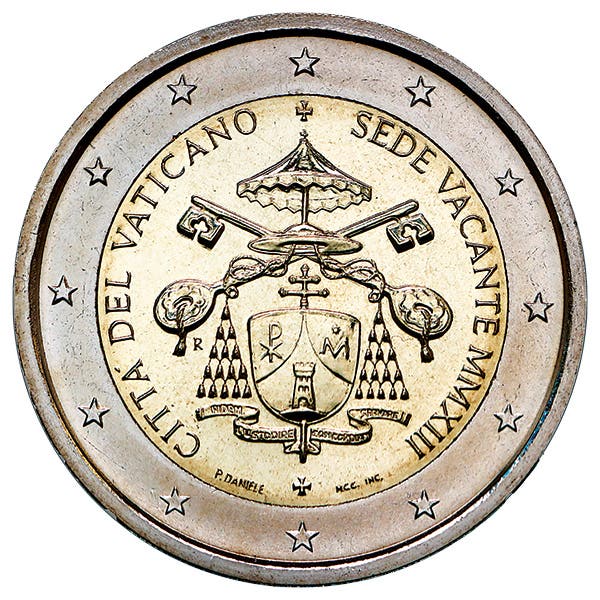The Coin Connection to President Trump’s Expansionist Plans
Trump’s expansionist ambitions reignite debates—but the U.S. already has longstanding numismatic ties with Panama, Greenland, and Canada that tell a deeper story.
Pronouncements from President-elect Donald Trump have recently brought the expansion of American lands into the news cycle. The takeover of the Panama Canal (which America had a large role in building), the seizure or purchase of Greenland, and the peaceful embrace of Canada as another American state have certainly drawn headlines and engaged critics and supporters alike.
However, the mention of these actions, regardless of how one views them, overlooks the longstanding numismatic relationships between the United States and all three countries, notably Panama.
Panama’s coins
The United States Mint first struck coins for Panama in 1904, just months after maneuvering involvement in constructing the Panama Canal after years of aborted efforts by France. This came after the country declared independence from Colombia.
Since that initial issue, Panama's coins have been fixed to the U.S. dollar in value. This 1904 issue comprises three .900 fine silver coins (the same fineness of American coins), the 2 ½-, 5-, and 10-centesimos coins, and the smallest coin is affectionately dubbed the “Panama Pill.” Weighing in at 1.25 grams and measuring 10 millimeters in diameter (almost exactly half the size and half the weight of a U.S. 10¢ coin), the “Panama Pill” is the smallest coin ever made at the U.S. Mint and one of the smallest in the world.
It has a mintage of 400,000 pieces, and its connection to America’s intervention in the canal and size give it charm and appeal to world coin collectors today. With about $1 of silver, its current Numismaster.com value in Mint State 60 is $35.
The U.S. Mint continued to strike coins for Panama for decades, mostly in the U.S. silver standard, but some coins in bronze and copper-nickel still counterparts to their U.S. equivalents.
In 1904, the U.S. Mint struck a reported 1.8 million examples of the 50 centesimos, but in 1905, the mintage was lowered to one million coins. One million coins from both years were later melted to strike 1-balboa coins in 1931. Examples of the 1904-dated 50-centesimos are valued at $175 in MS-60, and the 1905 coins are valued at $275 in the same grade, according to Numismaster.com, which catalogs them as KM-5.
Balboa currency
The Balboa currency was introduced in 1930 (with one balboa equal to one U.S. dollar), and Panama issued three different denominations under this system at first: 1/10, 1/4, and 1/2-balboa coins. The 1-balboa coins came one year later.
If these four coins seem oddly familiar to a U.S. audience, it’s because they have the same specifications as U.S. dimes, quarters, and half dollars of the period, and dollars are at least still in circulation.
Panama's coinage reflected these changes when the United States adopted the 40% silver and later copper-nickel clad coinage during the 1960s.
In 1966, the U.S. Mint struck 7.44 million of the copper-nickel clad quarter-balboa coins, according to the Annual Report for the United States Mint for 1966. The annual report for 1967 states that 1 million of the 40 percent silver-clad half balboas and 1 million of the copper-nickel clad 1/10th-balboa (equivalent to a U.S. half dollar and dime, respectively) were issued for circulation during that fiscal year, with 12,701 proof sets containing all six denominations struck at the San Francisco Mint. The other coins are the 1¢ and 5¢,1/4- and 1-balboa coins. This proof set was issued with coins dated 1966 and sold through Dayton, Ohio-based Paramount International Coin Corporation.
Clad alloys
Coins dated to 1966 marked the transition to the specifications that were then used for the formerly 90% silver U.S. coins. Because these coins are struck to the exact specifications as U.S. coins, the copper-nickel-clad 1/10th- and ¼-balboas can be used in U.S.-based vending machines for their equivalent value, 10¢ and 25¢. Though the coins are not worth less than their American counterparts, doing so might leave someone feeling cheated.
In the 1970s, Panama shifted to employing the U.S.-based Franklin Mint to strike its coins, especially leveraging the collectible coin market. Thus, the relationship with the official government mints of America ended.
But Panama isn’t the only nation connected to American coinage production, and our next example offers a wartime element.
Greenland
As many people are learning recently, Greenland has ties to Denmark, dating back most recently to 1814. The history of Danish exploration and colonialization dates back centuries earlier but is more complex than can be detailed here.
In 1814, as a result of the Napoleonic Wars, Norway was ceded to Sweden under the Treaty of Kiel. The colonies, including Greenland, remained in Danish possession. During World War II, Denmark came under attack from German forces, which seized the country in April 1940. This placed the colony of Greenland, an unoccupied territory of an occupied nation, under the possibility of seizure. The United States established control of Greenland, building extensive facilities for air and sea traffic in Greenland and radio beacons, radio stations, weather stations, ports, depots, artillery posts, and search-and-rescue stations.
An influx of American troops necessitated an increase in the local money supply, so the U.S. Mint in Philadelphia struck 5 kroner coins in brass, which are cataloged as KM-5 on Numismaster.com. Because of the colonial connection, the obverse features the coat-of-arms of Denmark, but the reverse features a polar bear design by American designer Gilroy Roberts.
These coins were “Mainly struck for use by American forces in Greenland during WWII, when 5 kroner was equal to one U.S. dollar,” according to Numismaster.com. The wartime circumstances, the popular polar bear, and American involvement make this coin particularly popular with world coin collectors. According to Numismaster.com, this coin is valued at $125 in MS-60.
Our final foray into modern American foreign policy, as seen through the lens of coinage, comes from Canada, America’s 51st state, er, our neighbor to the north.
Canada
Canada has had its own mint since 1908, several decades after confederation in 1867. So, how does the U.S. Mint fit into this story?
During the 1960s, just as America was experiencing increasing demand for circulation coinage (as the Baby Boomer generation came of age and the nation’s economy was humming right along), Canada also needed more coins.
The same economic forces that forced the United States of America to reduce the silver content of several of its coins before abandoning silver altogether conspired against the producers of Canadian coinage.
Canada had used .800 fine silver for decades before reducing the silver content for the 10¢ and 25¢ coins in the middle of production of the 1967 Confederation centennial coins, so there are two versions. In 1968, Canada continued issuing this lower fineness for those two denominations (though it abandoned silver in the 50¢ and $1 coins) before being forced to eliminate silver altogether from the 10¢ and 25¢.
In addition to these pressures, the Ottawa Mint (then the only mint facility in Canada) couldn’t keep up with demand, so it contracted with the USA to have 1968-dated nickel 10¢ coins struck at the Philadelphia Mint.
So, there are three versions for 1968: .500-fine silver versions, all struck at Ottawa, and two nickel versions, one struck in Ottawa and the other in Philadelphia.
Numismaster.com helpfully offers these tips to distinguish the two coins. Those struck at the Ottawa Mint (designated KM- 72a in Numismaster.com for the nickel version) feature reeding with pointed, deep areas in the edge reeding. The reeding for Philadelphia Mint strikes (KM-73) has flat, deep areas in the edge reeding.
Rarely have we encountered examples of these coins designated by their mint of manufacture, perhaps the extremely small design elements on an already small denomination taxing even the sharpest of eyes. Numismaster.com values the USA-struck coin, KM-73, at 40¢ in MS-63 and $40 in MS-65.
The United States Mint hasn’t struck coinage for international clients in 25 years, with the 1000 krónur from Iceland for the millennium anniversary of Leif Erikson the last time such partnership occurred. Though the U.S. Mint has increasingly cooperated with world mints (like the 2019 “Pride of Two Nations” set issued with Canada or the 2024 “Liberty & Britannia” issue that included the Royal Mint in the United Kingdom, it seems unlikely that the U.S. Mint will again strike circulating coins for other countries.
You may also like:
Jeff Starck is the Market Analyst for Numismaster.com and is a lifelong collector and writer. His appreciation for and interest in world coins and writing allows him to share the hobby with others.








